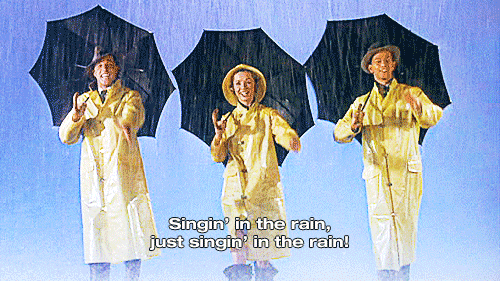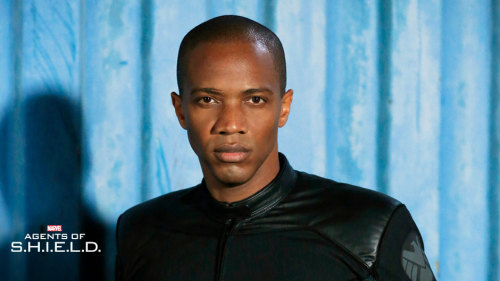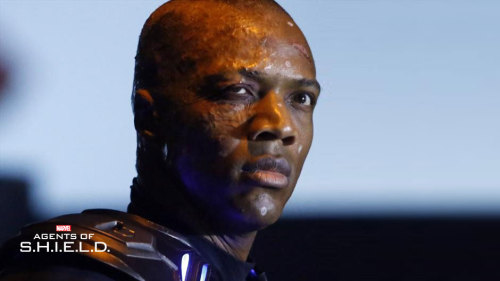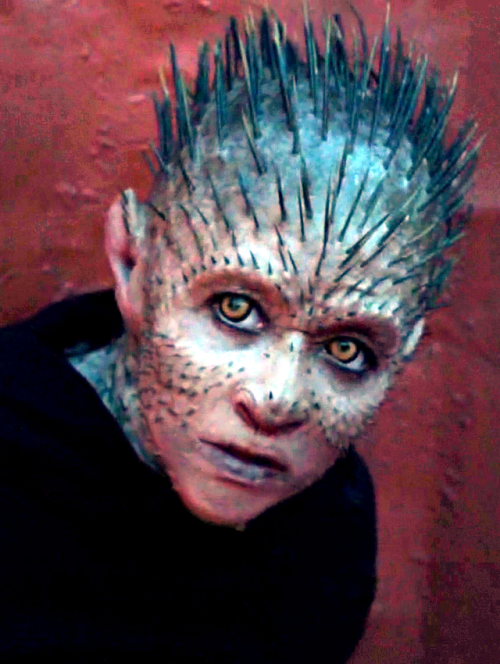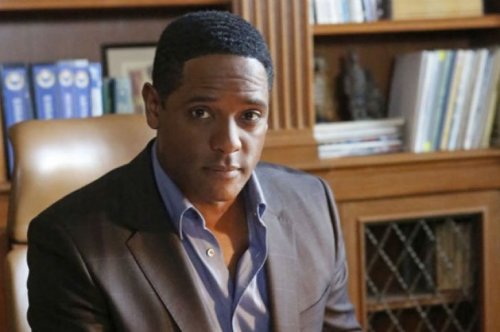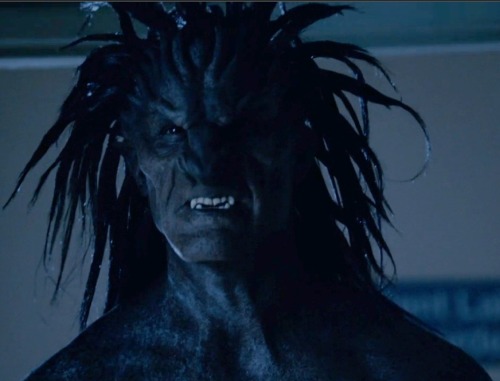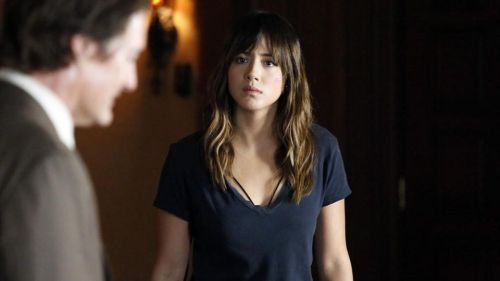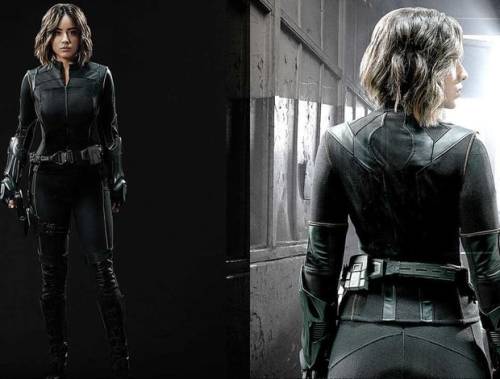
"SINGIN' IN THE RAIN" (1952) Review
There are certain movies in this world that I cannot be objective about - one way or the other. One of those movies happened to be the 1952 MGM musical, "SINGIN' IN THE RAIN".
Directed by Gene Kelly and Stanley Donen, "SINGIN' IN THE RAIN" was the brain child of Metro-Goldwyn-Mayer (MGM) producer and songwriter, Arthur Freed. While his 1951 musical "AN AMERICAN IN PARIS" was in its last stages of production, Freed came up with the idea of a musical that depicted - somewhat - the transition from silent films to talking pictures in Hollywood, during the late 1920. He recruited Broadway playwrights Betty Comden and Adolph Green, who had written three previous musicals for the studio, to write a screenplay that revolved around a collection of songs he had co-written with Nacio Herb Brown during the same period that the movie is set.
"SINGIN' IN THE RAIN" begins at Grauman's Chinese Theater in Hollywood, where a premiere is being held for Monumental Pictures' latest release - "The Royal Rascal". Starring the film's protagonist Don Lockwood and his leading lady, Lina Lamont, the movie is a big hit with the audience. On his way to a party held by the studio's head, R.F. Simpson, Don manages to avoid a group of screaming fans by hitching a ride with a young woman named Kathy Seldon. The two have a brief argument over the merits of screen and stage acting before Kathy delivers him to Simpson's home. During the party, Simpson reveals his plans to convert the studio to talking pictures following the success of Warner Brothers' 1927 release, "THE JAZZ SINGER".
Monumental's employees and contract players finally realize that Simpson was serious when orders for Don and Lina's next assignment - "The Dueling Cavalier" - to be converted into a talking picture. However, the production is beset by a few problems. One, Don has to contend with his leading lady, the shallow and conniving Lina Lamont, being convinced that they are meant to be great lovers in real life. Two, Don has fallen in love with Kathy Seldon, whom he discovers is a minor contract player on the Monumental lot. Three, no one - including the film's director Roscoe Dexter - has no idea of how to film a talking picture, let alone deal with the new sound equipment. And worst of all, Lina possesses a grating voice and strong New York accent that no diction coach can erase. Despite these problems, Don continues to pursue Kathy and Monumental Pictures soldiers on in its attempt to produce and release its first talking picture.
As many know, "SINGIN' IN THE RAIN" is considered one of the best Hollywood musicals ever made. And honestly, I would be the last to argue against this opinion. But upon my recent viewing of the film, I realized that I had one or two problems with the movie. Yes . . . definitely two. One of those problems proved to be the Cosmo Brown character portrayed by Donald O'Connor. Do not get me wrong. I love the character. But . . . what exactly was his position at Monumental Pictures? The movie began with flashbacks featuring Don and Cosmo's careers as barely successful vaudevillian song-and-dance men, their arrival in Southern California, Don's early career as a stunt man, Cosmo's role as a studio musician, and Don's start as a major star and Lina Lamont's leading man. Also, Cosmo seemed to serve as Don's sole member of his entourage in Hollywood. Yet, by the end of the film, he has become head of Monumental Pictures' music department, due to a few ideas he had about saving "The Dueling Cavalier"? That was all it took for Cosmo to unintentionally force the studio's previous music department's head out of a job? That seemed a bit too much for me to swallow. I was also disturbed by one scene in which Lina Lamont managed to intimidate studio chief R.F. Simpson into acquiescing to her every demand. I found that scenario rather hard to swallow. I do not care what kind of contract she had. I simply cannot see any Hollywood studio willing to agree with one that would give any contract player that level of power. Not even in a movie.
My bigger problem with "SINGIN IN THE RAIN" proved to be the film's second half. It seemed that by the time Cosmo, Don and Kathy discussed how to save the studio's first talking picture, the movie's narrative was in danger of running out of steam. Of course, we all know that the movie had to deal with Lina's downfall and Kathy's ascension as a star. But I found it disturbing that screenwriters had to include a seventeen-minute ballet - the famous "Broadway Melody" - to stretch out the film. Without it, the movie's running time would have lasted roughly 86 minutes. Hmmm . . . one would think that screenwriters Betty Comden and Adolph Green could have stretched out the film's narrative a little better than that. Do not get me wrong. I enjoyed the "Broadway Melody" . . . well, most of it. I must confess that I am not a fan of the segment that featured Gene Kelly, Cyd Charisse and a long white scarf. Needless to say, I found it extremely boring! Every time the ballet came to this point, I have to press that FastForward button on my DVD remote to skip past it.
Despite these quibbles, I love "SINGIN' IN THE RAIN". Why deny it? One, I enjoyed the story. I thought Comden and Green had created a very entertaining and romanticized story about Hollywood's transition from silent films to talkies in the late 1920s. Not only did I find it entertaining, I also found it extremely funny. Among the film's best moments include Don Lockwood's amusing and rather exaggerated recollection of his and Cosmo Brown's years in vaudeville and their arrival in Hollywood; Don and Kathy's rather funny first meeting on the streets; the revelation of Lina Lamont's awful voice; the hilarious and chaotic filming of "The Dueling Cavalier"; and the equally hilarious test screening of the film that proved to be a disaster. There were just so many moments that left me in a state of uncontrolled laughter.
As for the film's narrative - it is simple enough. "SINGIN' IN THE RAIN" is about the Hollywood's transition from silent movies to talking films via the experiences of a fictional movie studio. I realize that this might sound like pretentious bullshit, but there were times that I found myself wondering if Don Lockwood served as a metaphor for Monumental Pictures. Or if Lina Lamont and Kathy Seldon symbolized the silent and upcoming sound eras. Okay, that does sound like pretentious bullshit. But I do find it odd that Don eventually eases into a relationship with Kathy around the same time that Monumental embraces talking pictures. You know what? Perhaps I should back off and simply state that I enjoyed the film's comedic narrative about the transition to sound and leave it at that.
Of course, I cannot discuss "SINGIN' IN THE RAIN" without bringing up the film's musical numbers. I learned that most of the songs were written by the movie's producer, Arthur Freed and his former partner, Nacio Herb Brown. Comden and Green wrote two of the film's songs - "Make 'Em Laugh" (which strongly resembled Cole Porter's tune, "Be a Clown") and "Moses Supposes" (with Roger Edens). But if I had to be honest, the choreography that accompanied most of these songs made those songs memorable to me. This was especially the case for "Make 'Em Laugh", "Moses Supposes", "Good Morning" and "Singin' in the Rain".
"Make 'Em Laugh" featured a delightfully frenetic dance number by Donald O'Connor that still boggles the mind after 66 years. For a guy who claimed that he was basically a hoofer, this extraordinary dance number proved that he was a lot more. O'Connor was also featured in two dance numbers with star Gene Kelly. And one of them was "Moses Supposes". Although I found the song amusing, but not particularly memorable, I thought Kelly and O'Connor's dancing was superb. In fact, I would consider their dance routine to be among the best I have seen on film. "Good Morning", a song that was featured in one of MGM's past films, was also charming and peppy. I could say the same about the dance number by Kelly, O'Connor and Debbie Reynolds. I could . . . but I would also like to add that this dance number conveyed that the trio had a magical screen chemistry, which is why it has always been a favorite of mine. Now, the "Singin in the Rain"was a pleasant song written and published back in 1927 and if I must be honest, Gene Kelly did not utilize any special dance steps for his performance. And yet . . . there is something special about it. The entire number struck me as an ultimate expression of unadulterated joy. And it reminded me of a happy moment during my childhood when my sister, brother and I were outside of our apartment building scampering on the lawn during a rain shower.
There were other musical numbers that I enjoyed. "All I Do Is Dream of You" is a delightful song-and-dance number performed by Debbie Reynolds and a group of chorus girls. This scene must have marked the first time moviegoers saw how talented the actress truly was. I also enjoyed Kelly and O'Connor's first dance number in the movie, "Fit as a Fiddle (And Ready for Love)", which served as a part of Don Lockwood's hilarious early recollections of him and Cosmo Brown as part of a vaudeville act. And of course, there was the "Broadway Melody" ballet. Yes, I admit that I did not care for one part of it; which involved Kelly, Cyd Charisse and a long scarf. However, the rest of the ballet struck me as outstanding . . . especially that sexy-as-hell dance number between Kelly and Charisse. I will be the first to admit that "Beautiful Girls" number struck me as a bit of a bore. However, I was entertained by the number's fashion show (something that many studios used to include in their movies between the end of the 1920s to the beginning of the 1940s) that featured some of Walter Plunkett's most colorful costume designs:

What can I say about the performances in "SINGIN' IN THE RAIN"? They were outstanding. Even those performances from supporting characters like Millard Mitchell, a hilarious Douglas Crawley, Kathleen Freeman, Madge Blake and a very young Rita Moreno proved to be very entertaining. The movie's best performance came from Jean Hagen, who hilariously portrayed the vain and talentless Lina Lamont, whose unattractive voice threatened to end her career with the emergence of talking pictures. Hagen, who had earned a Best Supporting Actress Oscar nomination, had based her performance on Judy Holliday's Billie Dawn character from the play, "BORN YESTERDAY". Hagen had been Holliday's understudy. What I found impressive about Hagen's portrayal is that not only did I find her Lina Lamont beneath contempt, a small part of me found her a bit pathetic and sad. Because she had only appeared in the "Broadway Melody" ballet, Cyd Charisse did not have a speaking role. But her superb and sexy dance number with Kelly re-charged her movie career for greater glory throughout the 1950s.
Another cast member who earned an acting award was Donald O'Connor, who won a Golden Globe Award for Best Actor in a Musical or Comedy for portraying Don Lockwood's closest friend, the musically inclined Cosmo Brown. Aside from his brilliant dancing, O'Connor gave a delicious performance as the sardonic and witty musician, who seemed to take great pleasure at taking pot shots at Lina Lamont. Aspiring actress Kathy Selden proved to be Debbie Reynolds' sixth role in her long film and television career. Was it the role that finally led her to stardom? Probably. For most of the film, Kathy Selden is a nice, peppy girl with ambitions to make it big in films. I would have dismissed Reynolds' performance as that of a safe, leading lady if it were not for her dancing talents that had emerged in this film (thanks to Kelly's tutoring). However, there is one scene - namely Kathy Seldon's first meeting with actor Don Lockwood - that foreshadowed her brilliant talent for comedic acting.
When people discuss Gene Kelly's performance in "SINGIN' IN THE RAIN", they usually talk about his . . . well, his dance numbers. Especially the "Broadway Melody" ballet, his duet with O'Connor in the "Moses Supposes" number, and of course . . . the "Singin' in the Rain" dance. As much as I enjoyed his dancing performance, I had to admit that I also enjoyed his portrayal of Don Lockwood. I liked how Kelly made it clear that although Don's wit is not as sharp as Cosmo's, it still existed and that he can be a very good comedic actor. This was especially clear in those scenes in which he has to fight off Lina's constant pursuit of him. One truly funny moment featured a sequence in which he shot a series of insults at Lina, while they filmed a scene from the silent version of "The Dueling Cavalier". Kelly was also very funny when his character, Don Lockwood, gave a hilarious account of his and Cosmo's early years on the vaudevillian circuit and in Hollywood. More importantly, I enjoyed how Kelly skillfully conveyed Don's insecurities and fear of the latter's career fading, after his initial encounter with Kathy Seldon's faux pretentious attitude toward movie acting.
Yes, "SINGIN' IN THE RAIN" is not perfect. But . . . I cannot deny that I believe it is one of the best movie musicals I have ever seen, hands down. It is a masterpiece, thanks to Betty Comden and Adolph Green's entertaining and funny screenplay, Stanley Donen and Gene Kelly's direction of both the narrative and musical scenes and wonderful performances by a cast led by Kelly, Debbie Reynolds and Donald O'Connor. To this day, I find it hard to believe that following its initial release, it was only a modest hit.
